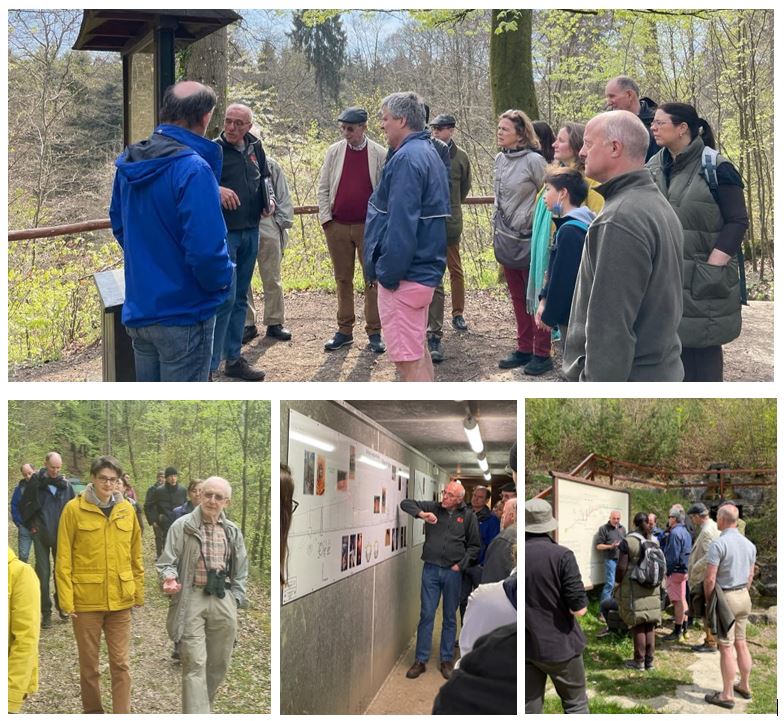On St George’s day we enjoyed a guided visit to the “Rashpëtzer”, the Luxembourgisch name for the world’s largest Roman Qanat. We saw how the erstwhile tunneling construction pits had been sinking over time, and how the Qanat was discovered in 1914, then explored by the Walferdange Syndicat d’Initiative, our host for the afternoon.
In the 2nd century A.D., the Qanat was an underground aquaduct that brought water from an aquifer in the woods to a Roman settlement with army barracks in the Alzette Valley. From the guide we learned that the Romans were very particular about their drinking water and avoided rivers at all costs, for the danger of poisoning. They imported a Persian tunneling technique and employed it in current day Luxembourg to source sandstone filtered water.
We were shown into an underground gallery where we admired how the Romans hygienically transported their drinking water over a large distance under the beautiful Grengewald forest. Although not used for drinking water anymore, the Qanat is still working as it was two thousand years ago.

